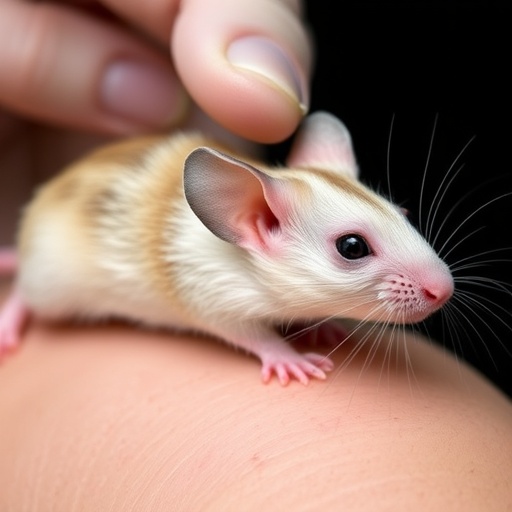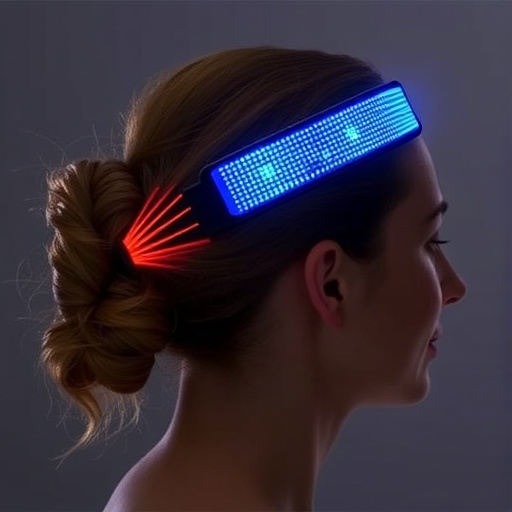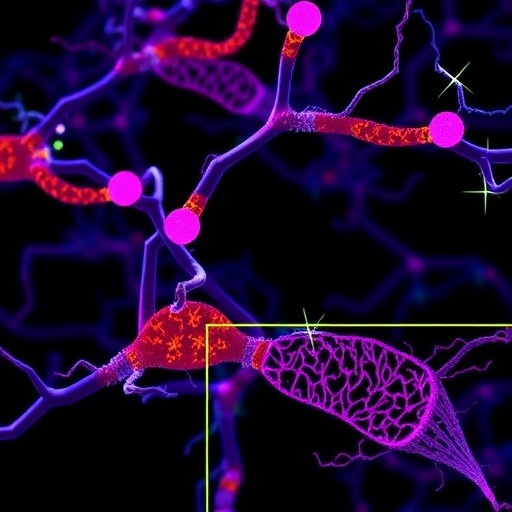In a breakthrough that could revolutionize vaccine administration, researchers have discovered that mechanically stretching the skin significantly enhances its permeability and activates the local immune system, offering a novel, needle-free method for delivering vaccines. This cutting-edge study, published in the esteemed journal Cell Reports, reveals that skin stretching not only opens a physical gateway for large molecules but also ignites an immune surveillance response that amplifies vaccine efficacy. This approach leverages the unique biology of hair follicles as conduits, opening up promising avenues for safer, more efficient immunization strategies without injections.
Traditionally, vaccination relies on intramuscular or subcutaneous injections to introduce antigens into the body. However, the skin itself is a highly immunocompetent organ, equipped with specialized immune cells capable of detecting and responding to pathogenic signals. Despite this, the skin’s barrier properties—primarily the resilient stratum corneum—have limited topical vaccine applications due to minimal permeability to large antigen molecules. The new findings challenge this limitation by demonstrating that controlled mechanical stretching can transiently remodel skin architecture, particularly collagen fibers, to permit vaccine penetration via hair follicles.
The researchers employed a specialized device that applies gentle suction to stretch the skin over a period of 20 minutes. This non-invasive manipulation was shown to temporarily increase skin permeability in both murine and human samples. Microscopic analyses revealed that the stretching caused collagen bundles in the dermis to realign, which mechanically opened hair follicle orifices. These openings functioned as preferential microchannels for the passage of large fluorescently labeled molecules. Importantly, the skin barrier properties were fully restored within 15 minutes after stretching ceased, suggesting a transient but sufficient window to facilitate antigen delivery without compromising long-term skin integrity.
Beyond increased permeability, stretching profoundly affected the skin’s immune environment. Transcriptomic profiling identified significant upregulation of more than a thousand genes, including numerous cytokines and immune signaling molecules involved in inflammatory and immune cell recruitment processes. Correspondingly, an influx of immune cells into the stretched skin was observed within 24 hours, indicative of an active immune surveillance state. This response did not require tissue injury, highlighting that mechanical deformation alone can stimulate innate immune mechanisms, an insight that may influence future dermatological and immunological therapies.
To examine the practical applicability of these findings, the team delivered a model influenza vaccine formulated with a fluorescent marker in a topical lotion applied concurrently with skin stretching. The results were compelling: compared to conventional intramuscular injections, the needle-free method elicited substantially higher antibody titers against the H1N1 flu antigen. The fluorescent vaccine demonstrated a gradual but sustained absorption into the bloodstream and accumulation within nearby lymph nodes, the sites where antigen-presenting cells orchestrate adaptive immune responses. This kinetic profile likely contributed to enhanced immunogenicity.
Interestingly, the addition of an adjuvant—commonly used to amplify vaccine responses—did not further improve immune outcomes when the vaccine was administered alongside skin stretching. This suggests that the mechanical activation of the skin’s immune milieu alone suffices to potentiate vaccine-induced immunity. The implication is significant as it could simplify vaccine formulations and reduce dependency on chemical adjuvants, which sometimes cause adverse effects.
Senior investigators highlight the broad implications of this discovery. The newly identified immune activation pathway through transient skin stretching could extend beyond vaccination. Potential applications include delivery of cell-based therapies, biologics, and even diagnostic agents through minimally invasive, user-friendly devices. Such flexibility would mark a substantial paradigm shift in drug delivery technologies, prioritizing patient comfort, safety, and accessibility.
The team acknowledges the inherent anatomical differences between mouse and human skin, notably the thicker stratum corneum in humans. However, because the stretch-induced permeability enhancement operates specifically through hair follicles rather than direct passage through the outer skin layer, the mechanism appears conserved across species. Preliminary human skin testing corroborated similar follicular opening patterns, providing a promising translational foundation. Nonetheless, comprehensive clinical investigations are needed to validate the immune-stimulating effects and safety of this method in humans.
Future research will focus on optimizing device parameters, such as duration and intensity of mechanical stretching, to maximize vaccine uptake while minimizing potential adverse reactions. Additionally, understanding the risk of unintended outcomes such as excessive inflammation or allergic sensitization triggered by this mechanical pathway remains a priority. The researchers emphasize the importance of monitoring immune responses comprehensively to ensure the technology’s viability for widespread clinical use.
This innovation is poised to address several long-standing challenges in vaccine delivery, including needle-associated pain, needle phobia, risk of needlestick injuries, and cold chain limitations linked to injectable formulations. A user-friendly, needle-free delivery system that harnesses the body’s own immunological architecture could significantly enhance vaccination campaigns, especially in resource-limited settings and for populations with needle aversions.
The findings fundamentally advance our understanding of skin mechanobiology and immunology, intertwining physical forces with immune function in a clinically relevant context. As ongoing studies refine this approach, the prospect of stretch-mediated vaccine delivery heralds a new frontier in preventive medicine, where non-invasive interventions seamlessly integrate with the body’s natural defense systems to promote health.
Subject of Research: Animals
Article Title: Transient skin stretching stimulates immune surveillance and promotes vaccine delivery via hair follicles
News Publication Date: 17-Sep-2025
References:
Benaouda et al., “Transient skin stretching stimulates immune surveillance and promotes vaccine delivery via hair follicles,” Cell Reports, DOI: 10.1016/j.celrep.2025.116224
Web References:
http://www.cell.com/cell-reports
Keywords:
Vaccine research, Vaccination, Hair follicles, Skin
Tags: breakthrough in vaccine technologycollagen remodeling for vaccinesenhanced skin permeabilityhair follicles in immunizationImmune system activationmechanotransduction in skin healthneedle-free vaccine deliverynon-invasive vaccination methodssafer immunization strategiesskin stretching techniquetopical vaccine applicationsvaccine administration innovation





